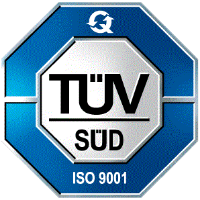With the Medical Device Regulation coming fully into force on 26 May 2020, there is a risk that a majority of the medical devices on the European market converting from the Medical Device Directive into the new Regulation will be considered by the Authorities and Notified Bodies to have insufficient clinical evidence to support their continued placement on the market.
According to the Notified Bodies estimated 80-90% of medical devices already CE marked will need to be supported by clinical data when converting to the Medical Device Regulation (MDR).
This is mainly due to a tightening of the controls on the use of clinical data from an equivalent product as the basis of CE certification. This means that, particularly for high risk products (Class III) and Class II implants, this practice is no longer possible except when there is direct access to the technical documentation of the claimed equivalent product, either the manufacturer’s own product or another manufacturer’s product. Manufacturers are required to analyse the clinical data that they have available and identify any potential evidence gap compared to the original manufacturer’s claims.
Using the grace period until May 2024 there is an opportunity to start creating the necessary clinical data through Post Market Clinical Follow-up activities under the existing CE certificate if available. If needed, conducting clinical investigations takes time and money and should be planned carefully to make sure good quality data are collected. For some products it will mean that there is not an economic reason to keep the product on the market. This article will focus on the requirements of Post Market Clinical Follow-up under the new Regulation and how to consider what activities to set up.
If you as a Manufacturer are working on your conversion from Medical Device Directive (MDD) to Medical Device Regulation and are confronted with the hurdle of defining your Post Market Clinical Follow-up activities the below key points can be helpful when preparing for your Notified Body expectations for Post Market Clinical Follow-up under the Medical Device Regulation:
- Perform a clinical data gap analysis with respect to the new MDR answering the question:
Do you have sufficient Clinical Evidence meaning clinical data and clinical evaluation results, pertaining to your devices of sufficient amount and quality to allow a qualified assessment of whether the device achieves the intended clinical benefit(s) and safety, when used as intended by the manufacturer?
- If insufficient clinical evidence, initiate pro-active Post Market Clinical Follow-up activities and investigations now, with devices still CE Marked under the current Medical Device Directive to prepare certification under the new Medical Device Regulation.
- Design studies/activities with the new Medical Device Regulation requirements in mind, to enable acceptability of these data for certification under the MDR.
- Verify whether ongoing post market studies could trigger a status change to “pre-CE-marking” which is subject to Competent Authority approval.
- Finally verify the updated, amended Clinical Evaluation Report and Clinical Development Plan with your Notified Body to ensure future acceptance and avoid surprises.
PMCF study design are very much dependent on the actual device and its indication and intended use including the company claims.
Remember the value of clinical data extends beyond compliance and the foremost benefit of identifying and eliminating any residual risk to patients. Long-term clinical data can also translate into economic value for medical device manufacturers: Having robust clinical data for a medical device is an excellent marketing tool that can drive sales and payer reimbursement.
Moreover, with a global legislative shift that is directing the need for an emphasis on Post Market Clinical Follow-up requirements – as well as the benefits of partnering with an experienced and well-resourced registered Notified Body in the assessment of such plans – manufacturers, physicians and patients stand to benefit greatly from strict compliance to EU Essential Requirements and a long-term commitment to post-market surveillance.
Qmed Consulting have supported many companies within all risk classes analyzing their existing clinical evidence and planned the appropriate Post Market Clinical Follow-up activities.
Qmed can set up your study(ies) and design the necessary documentation.
Qmed uses a flexible set up of the PMCF studies that enables the companies to cost-efficiently collect and analyse their PMCF study data without use of internal clinical and regulatory resources.
I encourage you to listen in on The Qmed Podcast talking to Bassil Akra from TÜV Product Services about the general changes to the Technical Documentation needed and how the Clinical Evaluation Plan and Processes lead to your Post Market Clinical Activity Plan. Listen and Enjoy!



